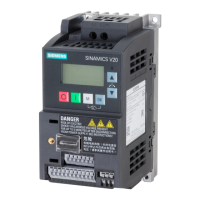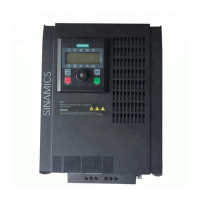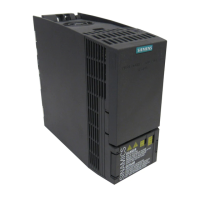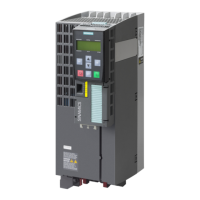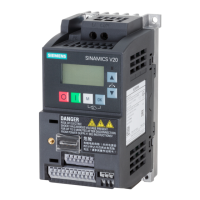AL S
08.95
AL S/2-12
Siemens AG 1997 All Rights reserved 6SN1197–0AA20
SIMODRIVE 611 (PJ)
2. Selecting the motor size
The load torque and the required traversing velocity define the gearbox
drive–out torque and the drive speed and therefore also the drive output.
The required drive output can then be calculated from this data:
P
from
[W] = P
mot
η
G
= (π/30) M
mot
[Nm] n
mot
[RPM] η
G
The gearbox prevents heat from being dissipated through the motor flange,
and the gearbox itself generates friction heat.
The torque must be reduced for S1 duty.
Dimensioning for S1 duty
The required motor torque is calculated as follows:
(+ M
V
)
2
– M
V
2
M
mot
=
M
out
i * h
G
with MV = a * b *
n
mot
60
(1 – h
G
) *
K
T
2
R
ph.
M
V
calculated ”torque loss”
a π/2 for 1FT5 motors fed with squarewave current 1FT5
π/3 for 1FT6 motors fed with sinusoidal current
b 0.5 weighting factor for gearbox losses
(no dimensions)
n
mot
Motor speed [RPM]
R
ph.
Thermal resistance of the motor phase [Ω] = 1.4 R
ph.
(list)
M
out
Gearbox drive–out torque [Nm]
i Gearbox ratio (i>1)
η
G
Gearbox efficiency
P
mot
Motor output [W]
P
out
Gearbox drive–out power [W]
M
mot
Motor torque [Nm]
K
T
Torque constant [ ]
Nm
A
Typical efficiency:
Planetary gearbox η≈0.94 Single–stage
Spur gearing η≈0.95
Cyclo gearbox η≈0.92 Single–stage
Harmonic drive η≈0.7
Worm gear η≈0.45...0.9
Dimensioning for S3 duty
The torque does not have to be reduced.
M
mot
= M
red
/ (iη
G
)
General information on AC servomotors
2.2 Mounted/inte
rated components

